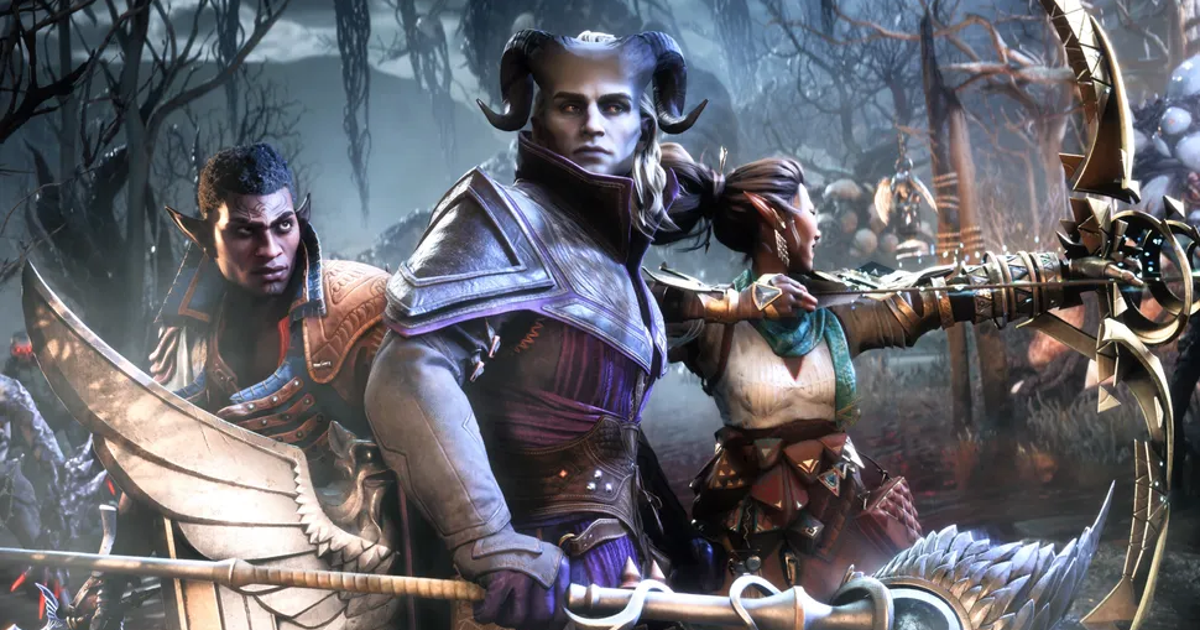Dragon Age: The Veilguard consultant and former Dragon Age executive producer Mark Darrah has published a Youtube video addressing the question: “why do AAA games take so long?” It’s a tidy 25 minutes or so, and gets a fair way into the weeds of a variety of topics, from the current enthusiasm for live service “forever games” over ‘finite’, narrative-led affairs, to the “misleading” announcement of highly-demanded sequels years before they enter full production, in order to pump up a publisher’s brand during a dry spell.
One thing I wanted to fish out and drop on your plate is Darrah’s discussion of what he terms “the fidelity death cult” – that is, the desire for ever greater levels of lifelike visual detail and “intricacy”.
“We are also in a period of something I’ve called the fidelity death cult,” Darrah explains in the vid, around the eight minute mark. “where a lot of games are trying for hyper-realistic art styles, hyper-high fidelity, hyper-customisation, hyper-intricacy. These things, while they don’t contribute to a larger size, while they don’t help you make a forever game, they still take a lot more time. When you are concerned about the way people’s hair moves on their back, that’s going to take time that you in the past wouldn’t have done. You would have just spray-painted their hairdo on, or given them a hair cap, or something pretty static. Now, you’re introducing new avenues of complexity.”
He extends the point to encompass player dislike of things in games they consider to have been “recycled”, from chunks of recurring environment to animation systems. “Similarly, we currently see from players quite a bit of pushback on the reuse of systems and assets, so even though I might be making a sequel to a game that came out just a couple of years ago, I might feel within the dev team that we can’t reuse any of our assets, because we’re going to get pushback from the players. And so while I might have been able to reuse some of those animations, or some of those models, or some of those areas, I might feel the need to recreate them to avoid that backlash. So I’m introducing additional time into the development process that otherwise would have allowed the game to come out sooner.”
Interestingly, Darrah notes that while the emphasis on giving players endless things to do, access and consume in “forever games” reflects audience research showing that this makes the game more enticing, the “fidelity death cult” and avoidance of asset reuse comes “more from a fear of backlash, as opposed to any more specific research that says that this is necessary”. He suggests that prioritising original asset creation and fidelity is “a trap that dev teams are kind of laying upon themselves”, pointing to Baldur’s Gate 3 as the “perfect example” of a game that has gotten away with downplaying “minor visual fidelity things that at the end of the day, often don’t matter that much”.
That the creed of ever-quantifiably-higher fidelity sponges up a lot of time and energy without really adding anything to games is a familiar argument, but always worth repeating. To slide into a bit of journalist navel-gazing, I’ll add that games that valorise fidelity for its own sake can be boring to write about, albeit partly because enthusiast readerships tend to want us to write about them in a certain way.
The associated traditions of realism and photorealism are, in themselves, complex, exciting and evolving, but within video game culture, those traditions are typically boiled down to numbers and buzzwords – higher polygon counts, more animated objects per scene, more lens flare per NPC tear, with a corresponding need for more potent, dirtier pieces of hardware to run games on. Mind you, if there’s a preference for interpreting realism and photorealism this way, that reflects the audience tastes that both “AAA” developers and journalists have cultivated for themselves over the decades, by consenting to the whim of the marketing machine. I’ve written my share of articles about higher resolutions and posh new species of shader. One thing I’d like to ask Darrah is: how exactly should blockbuster game developers unravel the “fidelity death cult”? How should they persuade more tech-devoted players to get over the sight of some sprayed-on hair?

